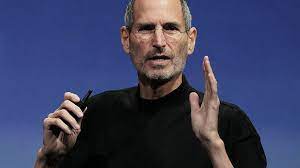I think that Steve Jobs is very right in his critique of emails that people are creating today. Most emails are way too broad and do not highlight one key thing that the sender is trying to convey with their message. Most include what I call fluff within their emails, unnecessary information that one does not need in order to convey their message. Whether this be by: using too many action verbs or whether it is by adding to many adjectives and adverbs, everyone falls victim to using fluff.
I looked online to see if there were any tips that I found that might work better than Steve Jobs tips and I found one that I think actually could fit right in with his tips. The tip read,”Read emails by threads in reverse chronological order and respond to them in chronological order.” (“7 Best Practices” 5). Using reverse chronological order allows the reader of the emails not only to better understand what the sender is trying to accomplish, but it better helps them to formulate a proper response. I also think that this idea could be applied to how one rereads their own emails before sending them. Reading backwards really helps highlight typos and helps one better understand what they have written. By using reverse chronological reading, it will help one make emails that are smoother and flow better.
I think that another thing that people struggle with is that lots of people do not know how to properly start an email; thus, most just get right into the email and do not create any form of greeting. Most emails just get right into the nitty gritty and do not flow well. NO NO NO, that is a very bad practice and it can come off as rude and unprofessional. Indeed provides a statement that says, “If you’re emailing a coworker, a casual greeting such as “Hello” may be appropriate. If you’re contacting someone for the first time or if they’re a professional acquaintance, use a more formal greeting like “Dear Sarah Atkins.” It’s recommended to use the person’s name exactly as it’s shown in their email signature line.”(Herrity 2). Using these greetings can create a drastic difference in writing and differentiating who one is writing to.

Steve Jobs is very well versed in talking about emails and saying what is good about them in my opinion. Not only did I agree with his article, but I also found online that,” Jobs was known to have a personal email address (sjobs@apple.com) that he used to communicate with others. According to reports, he energetically replied to emails from customers or fans who had questions, requests, or criticisms regarding Apple’s products or services.”(Lynch 1). Its Steve Jobs, he gets thousands to millions of emails a day leading to many different opportunities to see different styles and ways to write emails. If anyone knows what their doing around emails, it should be him.
Links:
.https://rockcontent.com/blog/email-management/ (period at front of these, take out for link)
.https://www.indeed.com/career-advice/career-development/email-etiquette
.https://www.thetechedvocate.org/did-steve-jobs-answer-email-personally/#:~:text=In%20fact%2C%20Jobs%20was%20known,regarding%20Apple’s%20products%20or%20services.